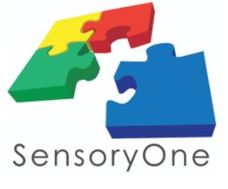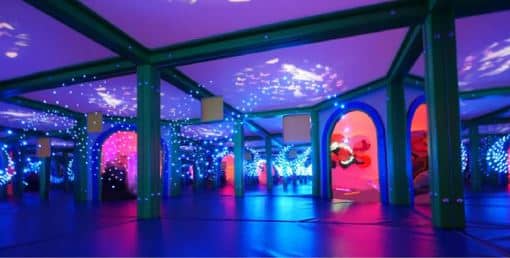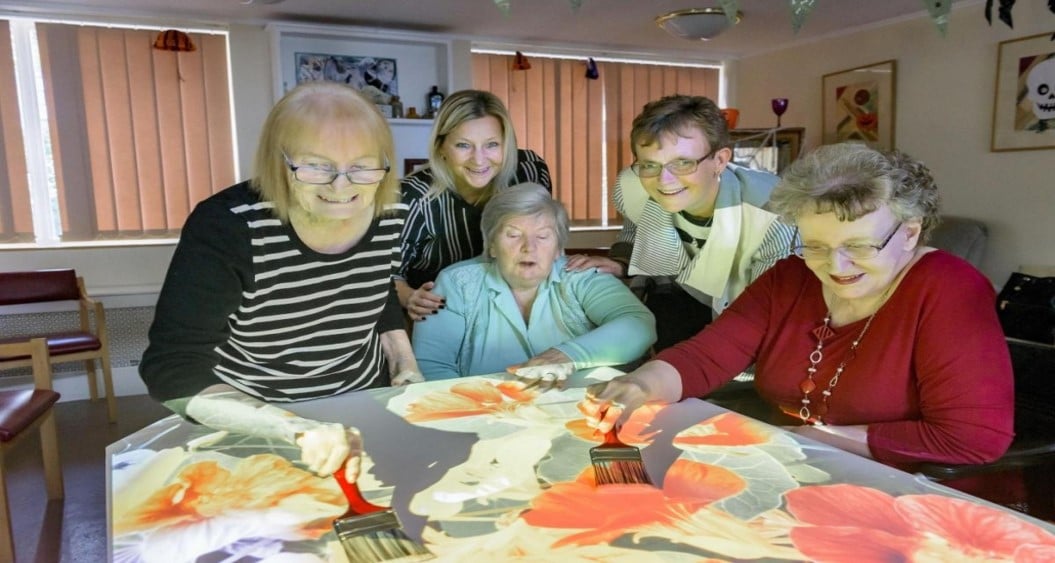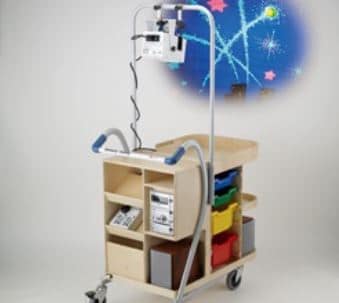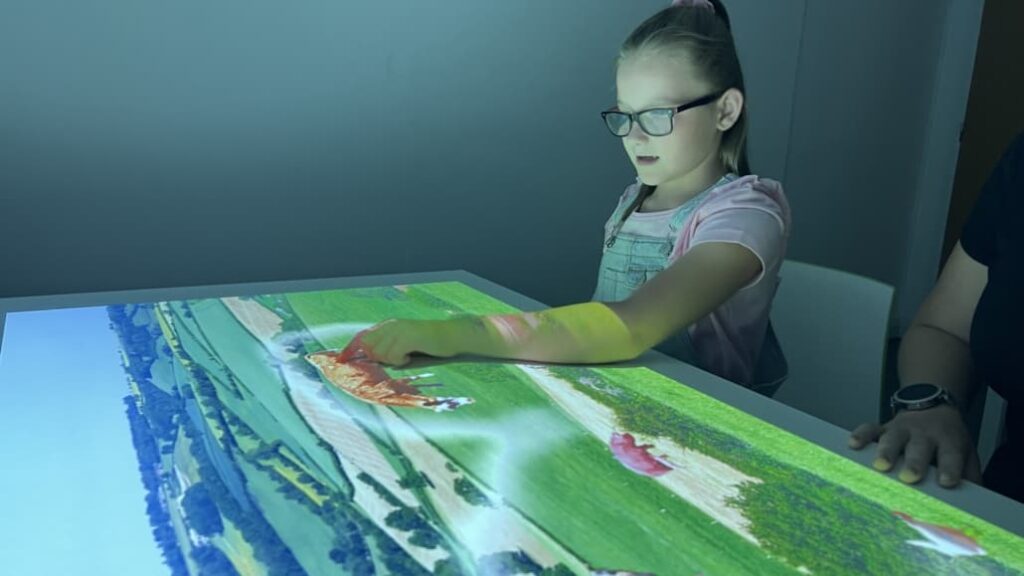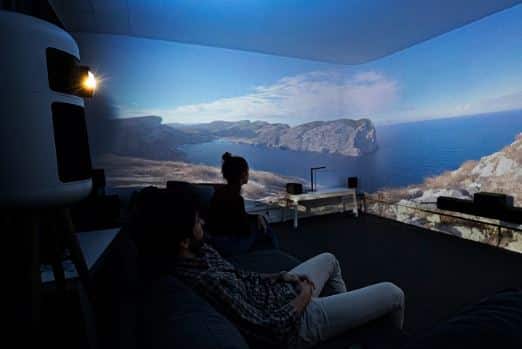In the ever-evolving realm of commercial interior design, a groundbreaking trend is gaining momentum – the integration of sensory spaces. Forward-thinking designers are steering away from conventional aesthetics and embracing innovative designs that engage the senses. From dedicated areas in waiting rooms to expansive walls in public spaces, the infusion of sensory elements is reshaping the way we experience and interact with commercial and institutional environments.
Sensory Spaces are increasingly incorporated, if not at the core of holistic interior design spaces. Commercial and institutional interior designers are providing their clients a whole new level of experiential and interactive design that goes well beyond visual appeal.
Alan Fine, President & CEO of SensoryOne
Sensory Spaces: Beyond Aesthetics
Traditionally, commercial interior design has been synonymous with aesthetics and functionality. However, the rising demand for a holistic experience has given birth to a new era, where the emphasis is not only on what we see but also on what we feel, hear, and even smell. Sensory spaces, strategically integrated into various settings, are creating immersive environments that go beyond the visual appeal.
1. Waiting Rooms: Transforming Anticipation into Experience
Leading commercial interior designers are now recognizing waiting rooms as a canvas for sensory exploration. Instead of sterile and uninviting spaces, waiting rooms are being transformed into dynamic environments. Incorporating elements like interactive screens displaying art, soothing sounds, and even aromatic diffusers, these waiting areas aim to engage visitors in a positive and memorable way.
According to a study by the Journal of Environmental Psychology, creating sensory-rich waiting areas can significantly reduce perceived wait times and improve overall satisfaction among visitors (source).
2. Hallways: Beyond Transit, Spaces for Reflection
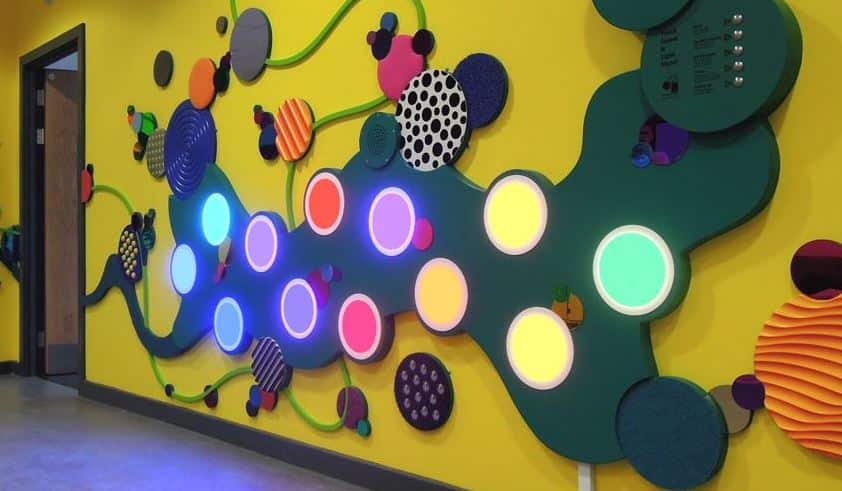
Hallways, often overlooked as mere transitional zones, are now being reimagined as avenues for sensory engagement. Expansive walls adorned with visually stimulating artwork, interactive installations, or even textured surfaces invite individuals to pause and reflect. This shift from a purely functional space to one that nurtures a brief moment of respite contributes to a more positive and mindful experience.
Incorporating sensory elements in hallways can enhance cognitive function and contribute to a more pleasant atmosphere.
3. Healthcare Settings: Healing through the Senses
Hospitals, health centers, and physicians’ offices are embracing the therapeutic potential of sensory spaces. Beyond the sterile and clinical environments of the past, designers are infusing these spaces with elements that promote healing and well-being. From calming color schemes to nature-inspired textures, the aim is to create environments that contribute to the overall healing process.
Sensory-rich healthcare environments promote improved patient outcomes, including reduced stress levels and faster recovery times.
4. Public Indoor Spaces: Fostering Community Engagement
The trend extends beyond individual businesses or institutions to public indoor spaces. Shopping malls, airports, and recreational areas are becoming hubs of sensory experiences. Architects and designers are collaborating to create visually striking installations, ambient lighting, and interactive displays that not only captivate attention but also foster a sense of community and engagement.
Increasingly, architectural best practices are attuned to the positive impact sensory-rich public spaces can have on social interactions and community well-being.
Benefits Beyond Aesthetics: The Multi-Faceted Advantage
The incorporation of sensory spaces goes beyond creating visually appealing environments. Designers and businesses are recognizing a myriad of benefits associated with this paradigm shift.
1. Enhanced Well-Being: Sensory-rich environments have been linked to improved mental well-being and reduced stress levels. Whether it’s the calming effect of nature-inspired elements or the invigorating stimulation of interactive displays, these spaces contribute to a positive emotional experience.
2. Increased Engagement: Interactive sensory elements capture attention and encourage active participation. In commercial settings, this translates to increased customer engagement and a memorable brand experience.
3. Improved Productivity: The impact of sensory-rich environments isn’t limited to customer-facing spaces. In offices and work settings, incorporating sensory elements has been shown to enhance creativity, focus, and overall productivity.
4. Positive Brand Association: Businesses are recognizing the potential of sensory design to create a lasting impression. A well-designed sensory space not only contributes to a positive customer experience but also enhances brand perception.
5. Inclusivity and Accessibility: Sensory design can cater to a diverse range of individuals, including those with sensory sensitivities. This commitment to inclusivity aligns with evolving societal values and promotes environments that are welcoming to all.
Embracing the Future of Commercial Design
As commercial interior design evolves, the incorporation of sensory spaces emerges as a transformative and inclusive approach. Designers are no longer limited to creating visually appealing spaces; they are crafting immersive environments that engage, inspire, and contribute to the well-being of individuals. From waiting rooms to public spaces, the sensory revolution is redefining how we experience the world around us.
In the words of renowned designer Jonathan Adler, “Design is about making people feel comfortable in their environment and their lives.” The shift towards sensory spaces is a testament to this philosophy, creating environments that not only look amazing but also resonate with the very essence of human experience. As businesses and institutions continue to embrace this paradigm shift, the future of commercial interior design promises to be a sensorially rich and emotionally resonant tapestry.

